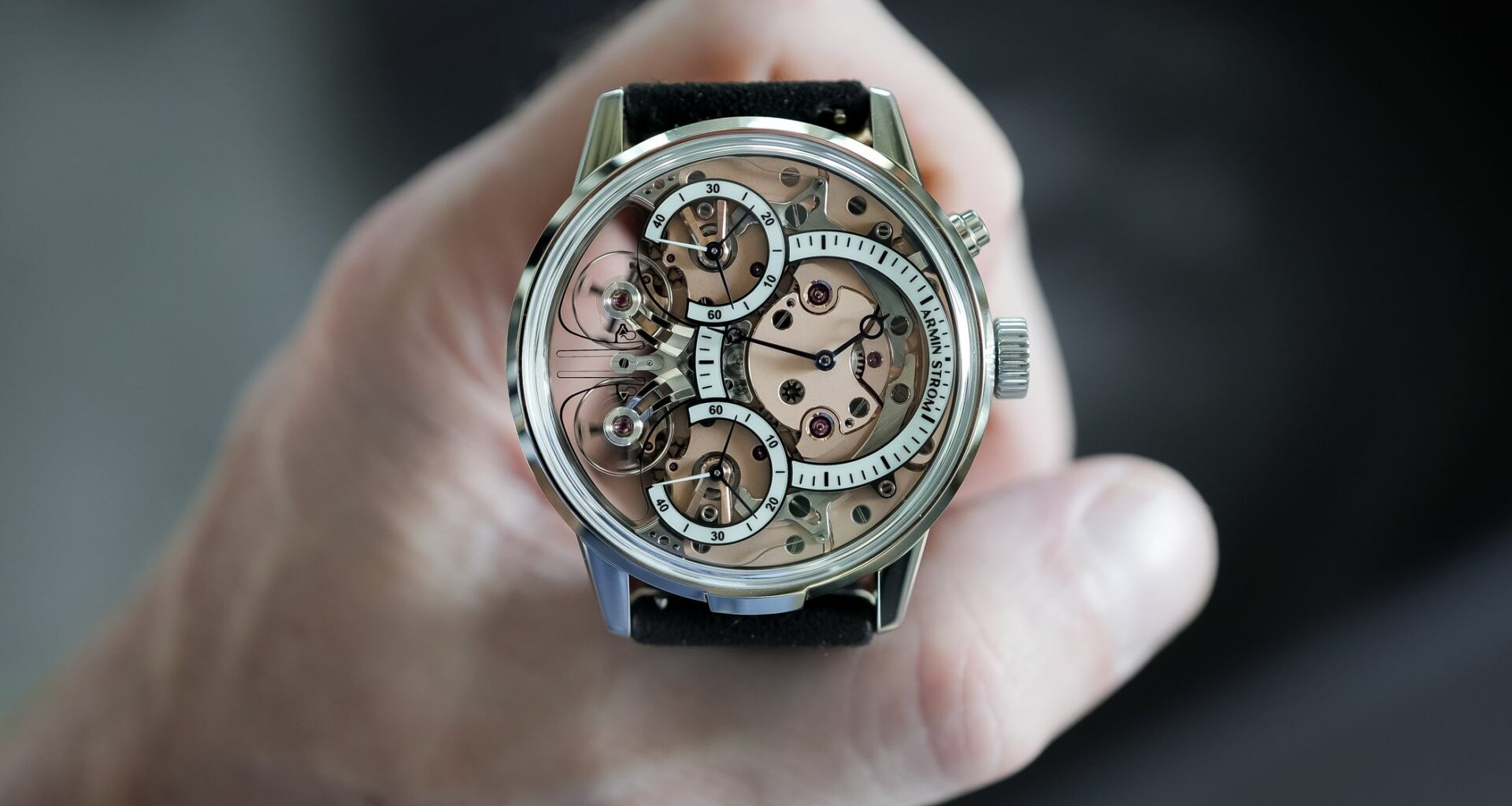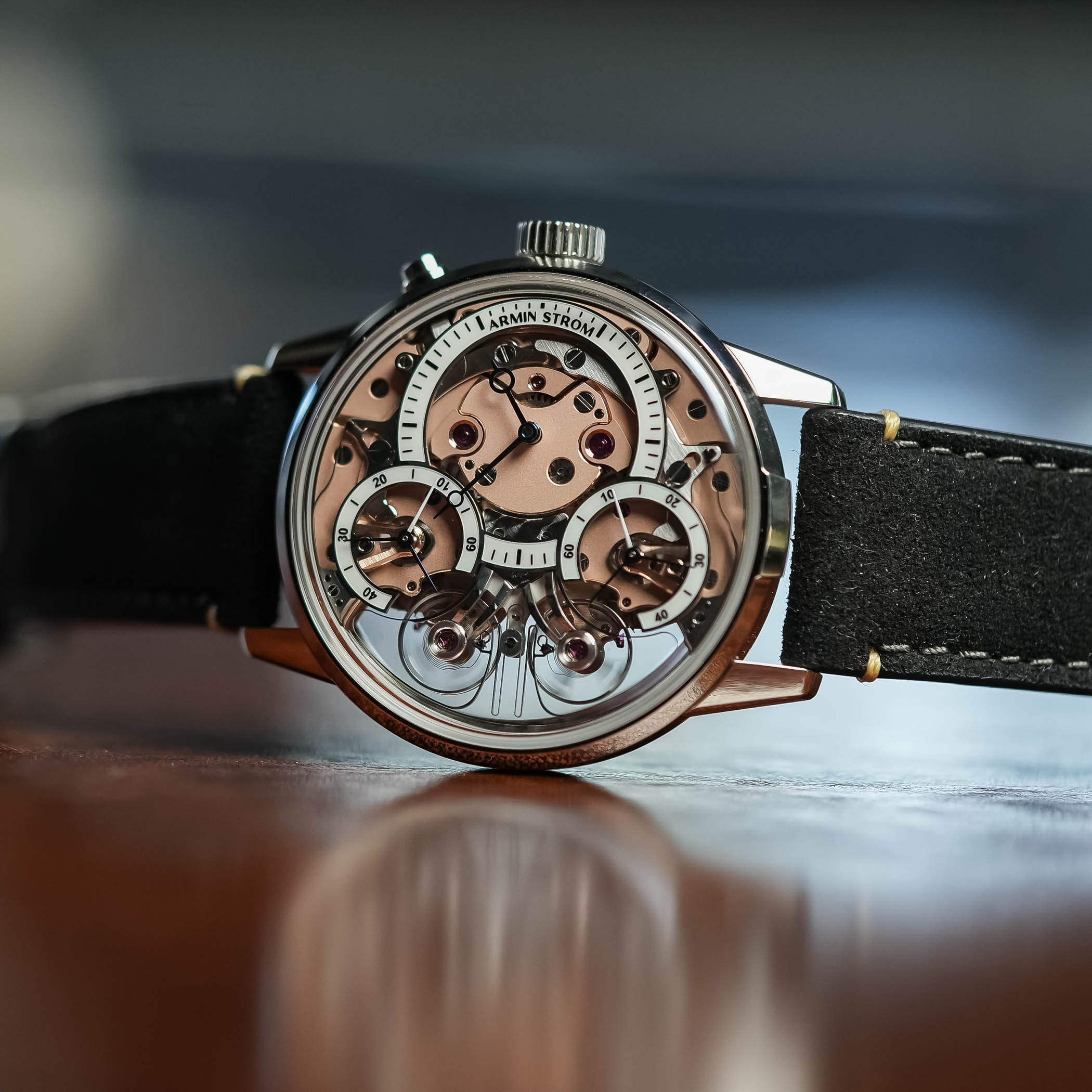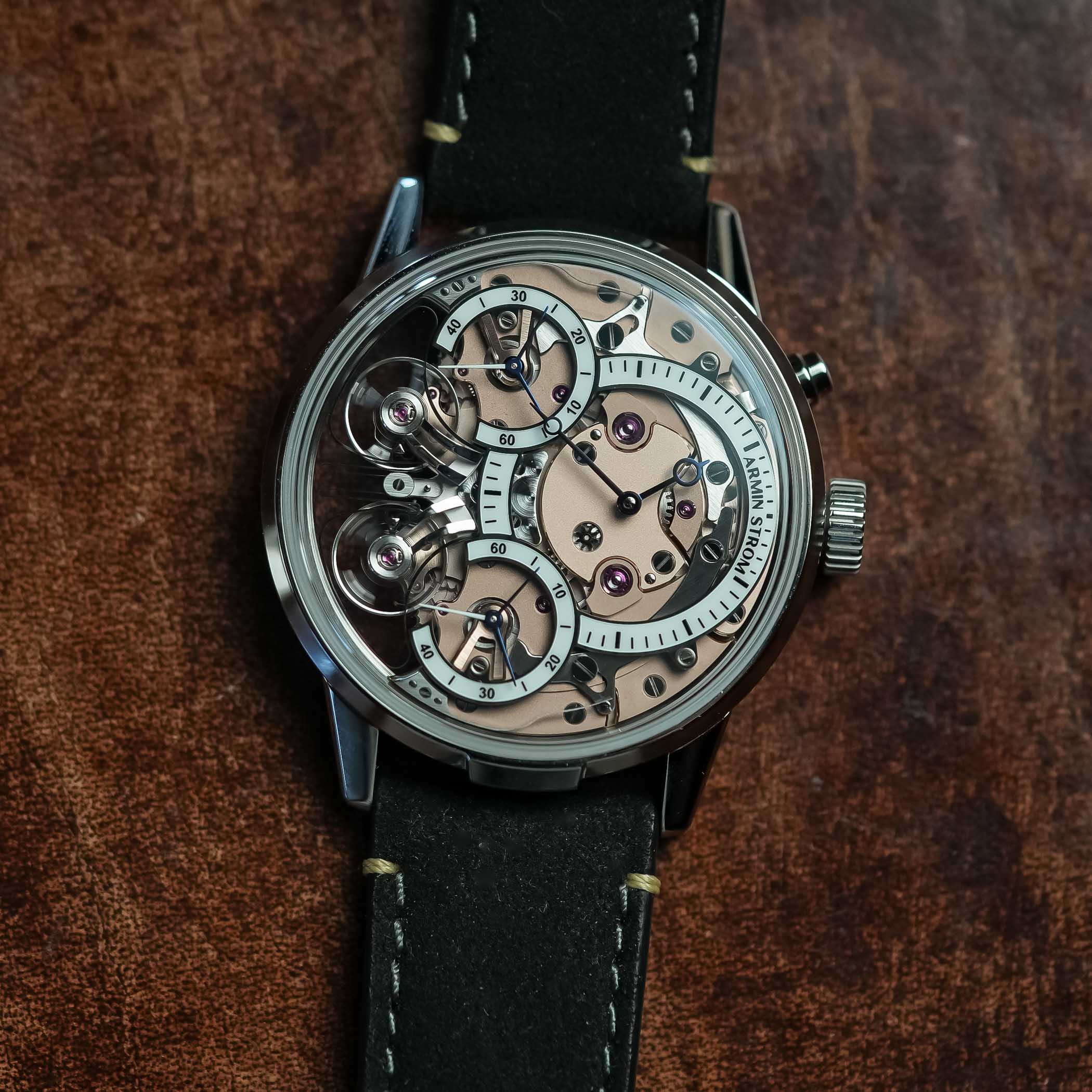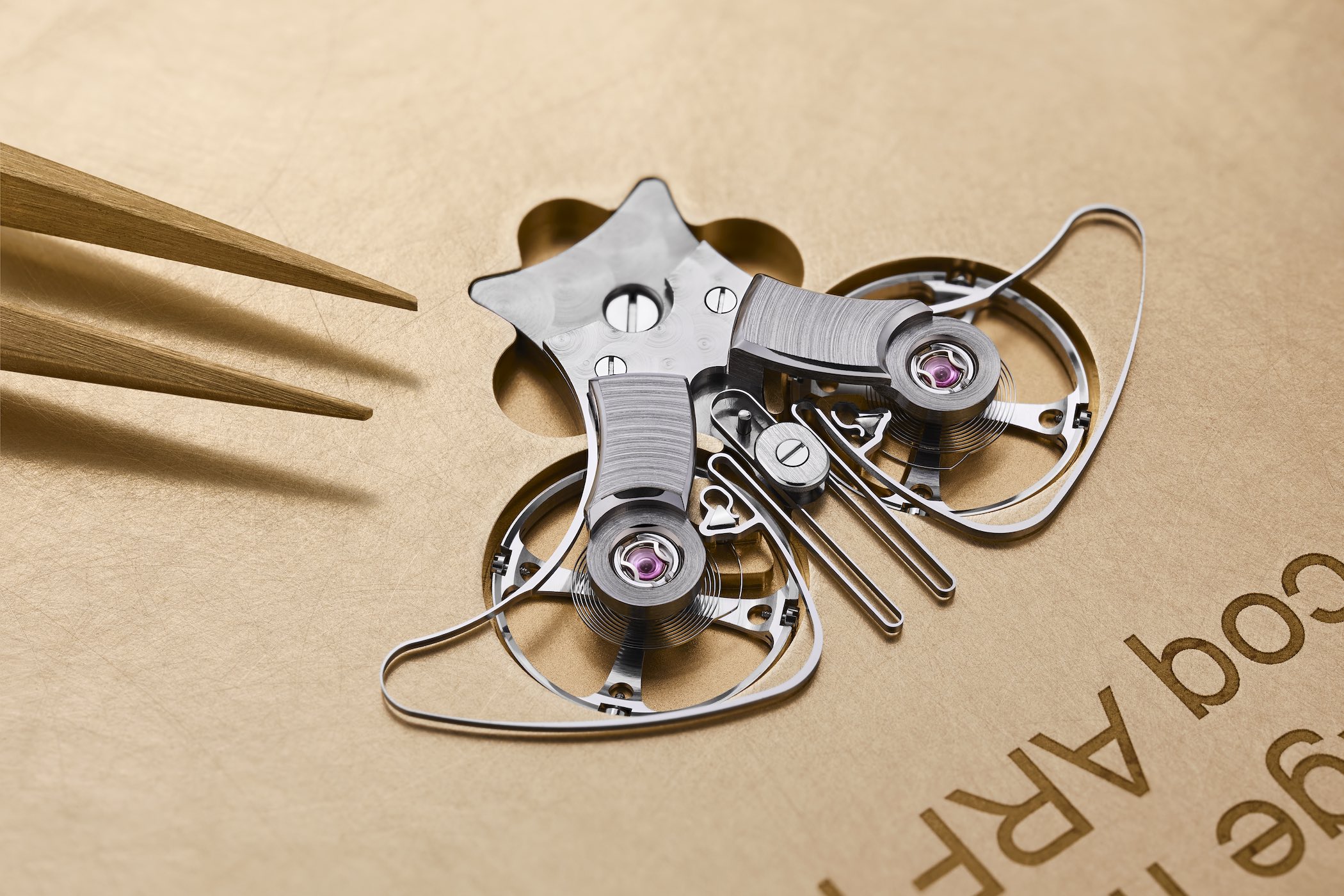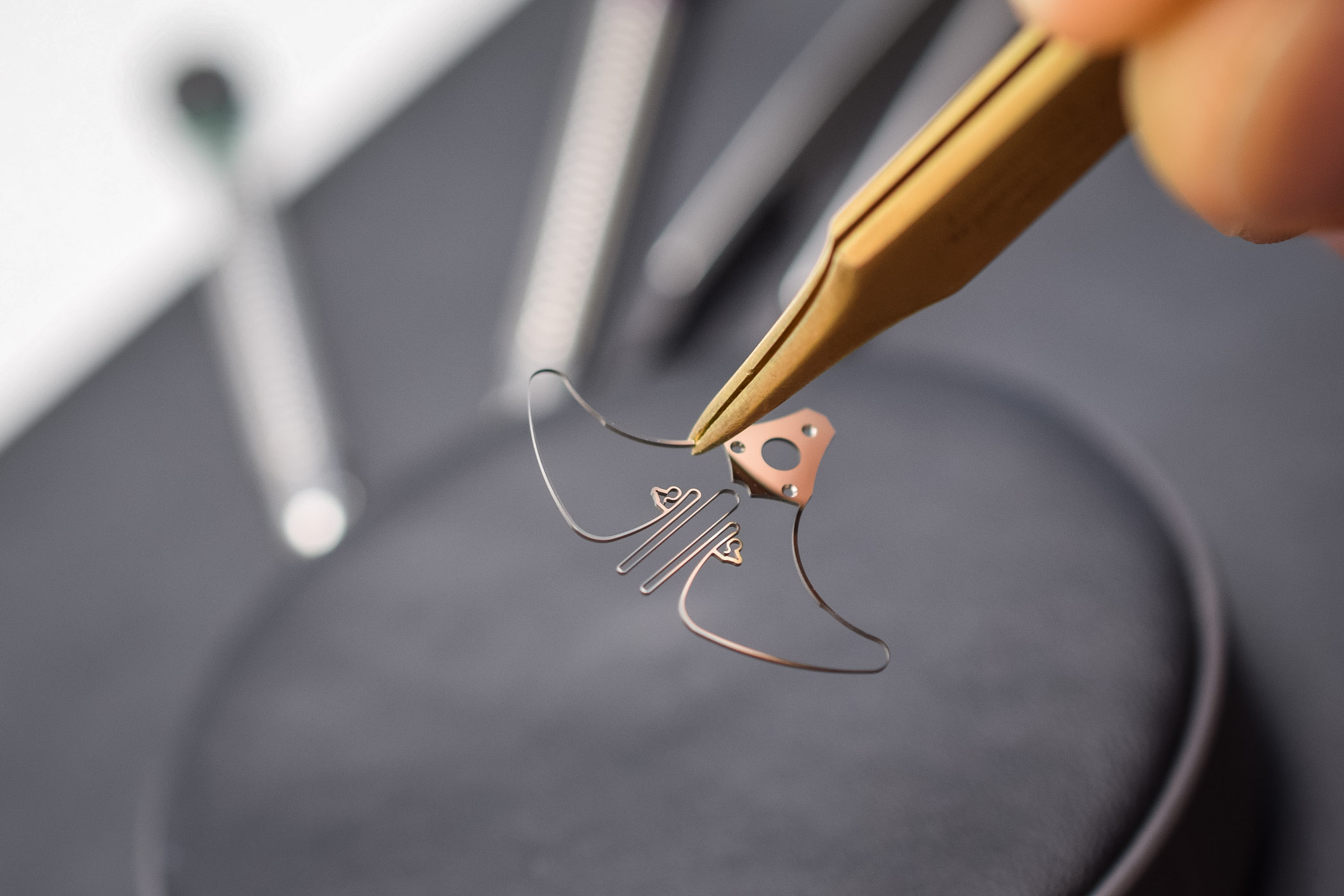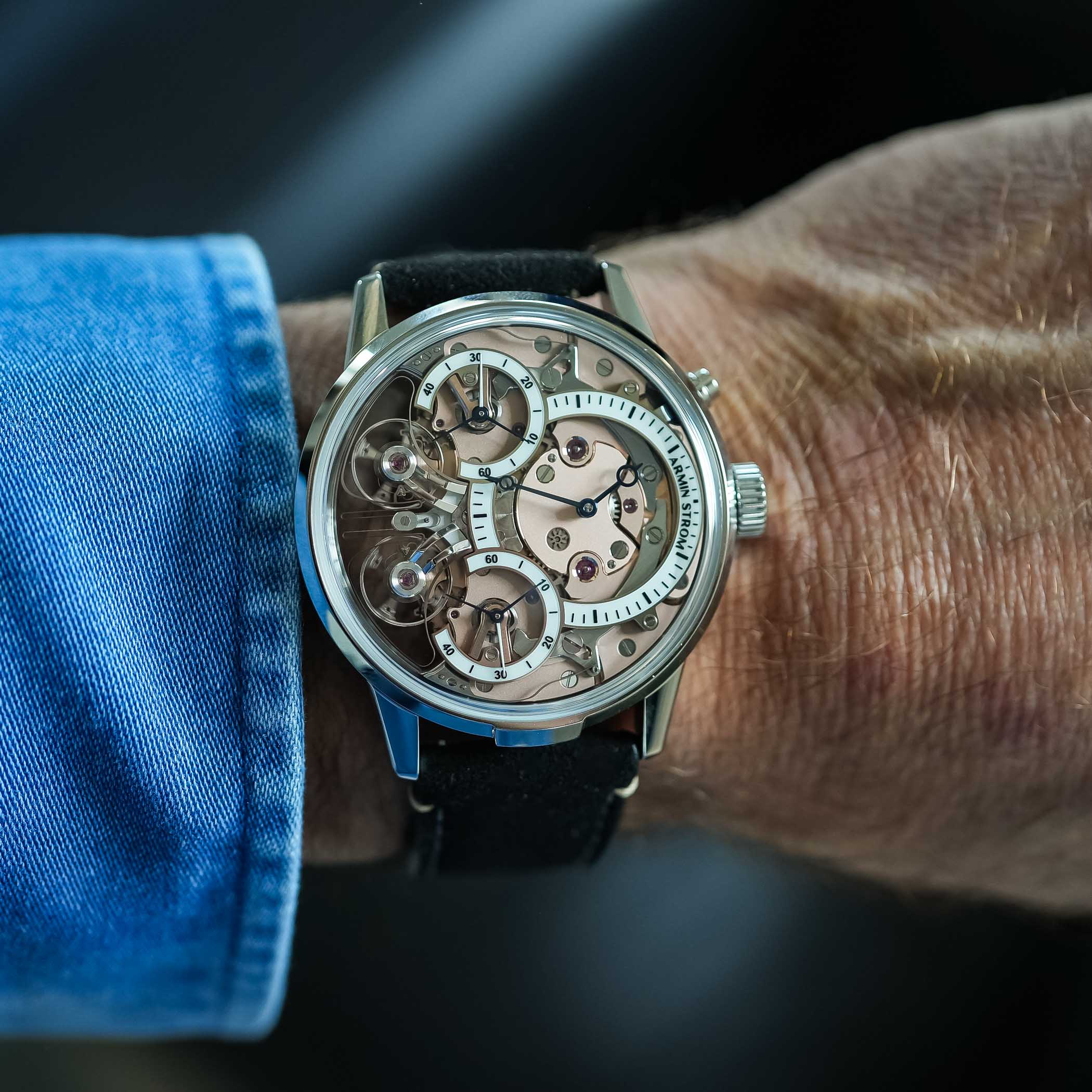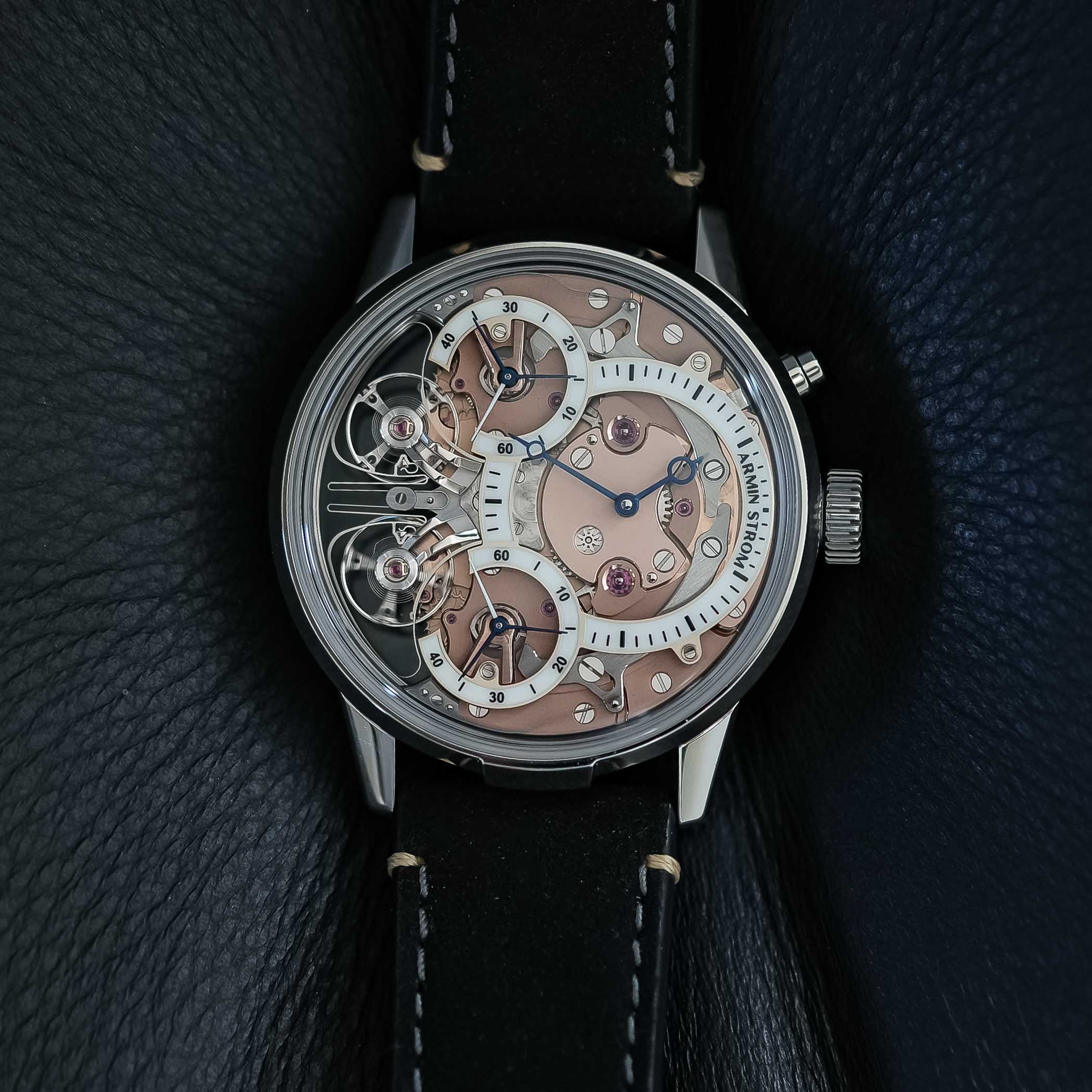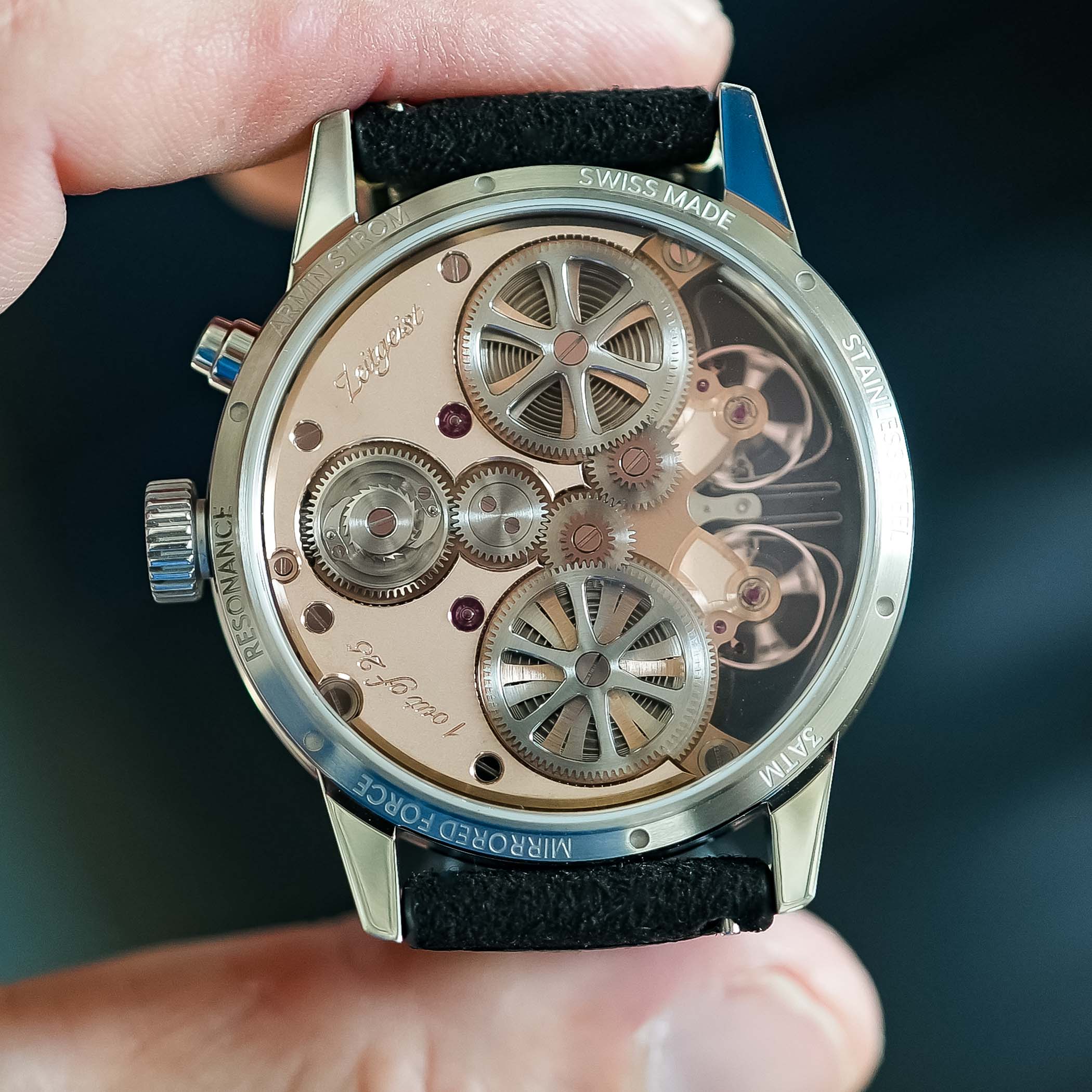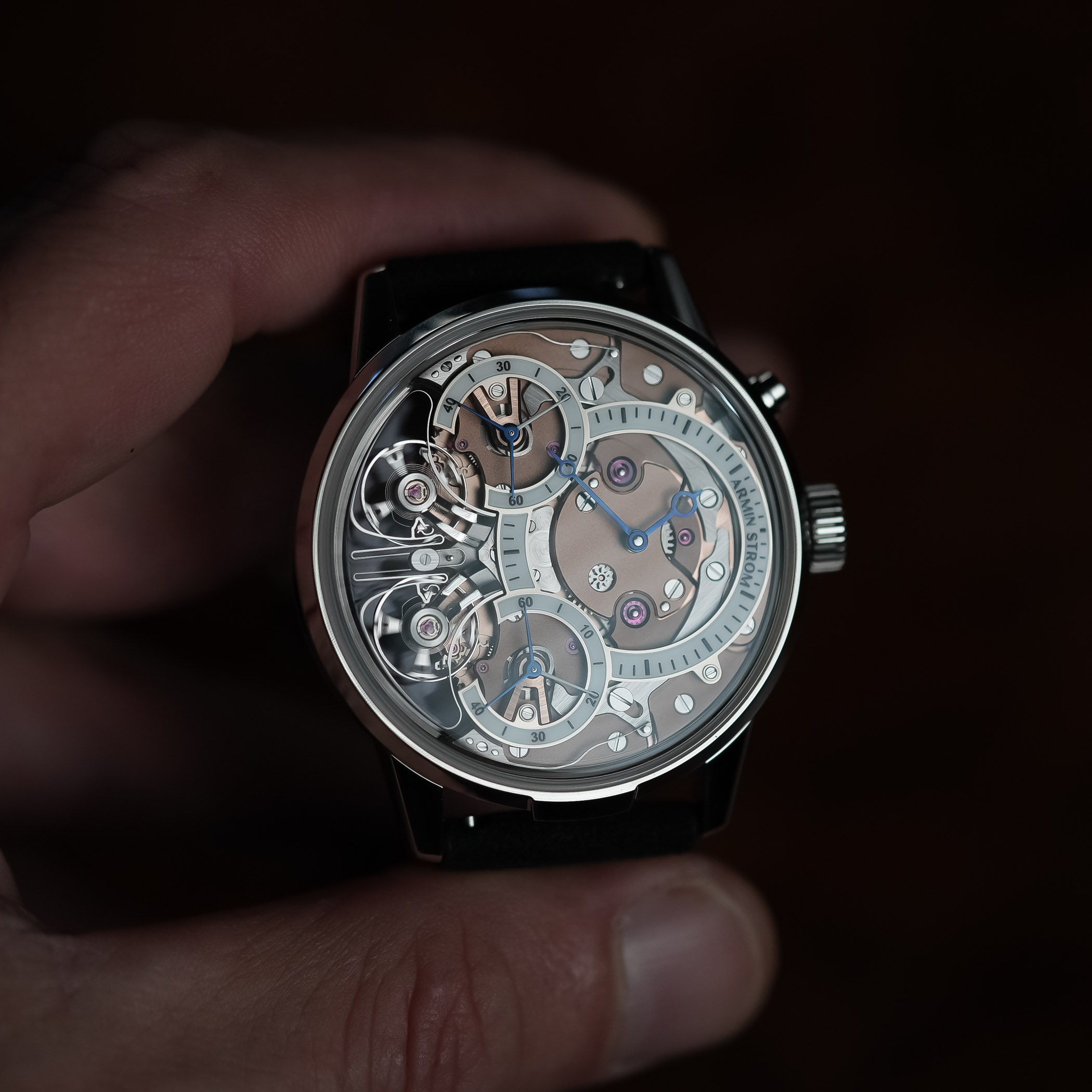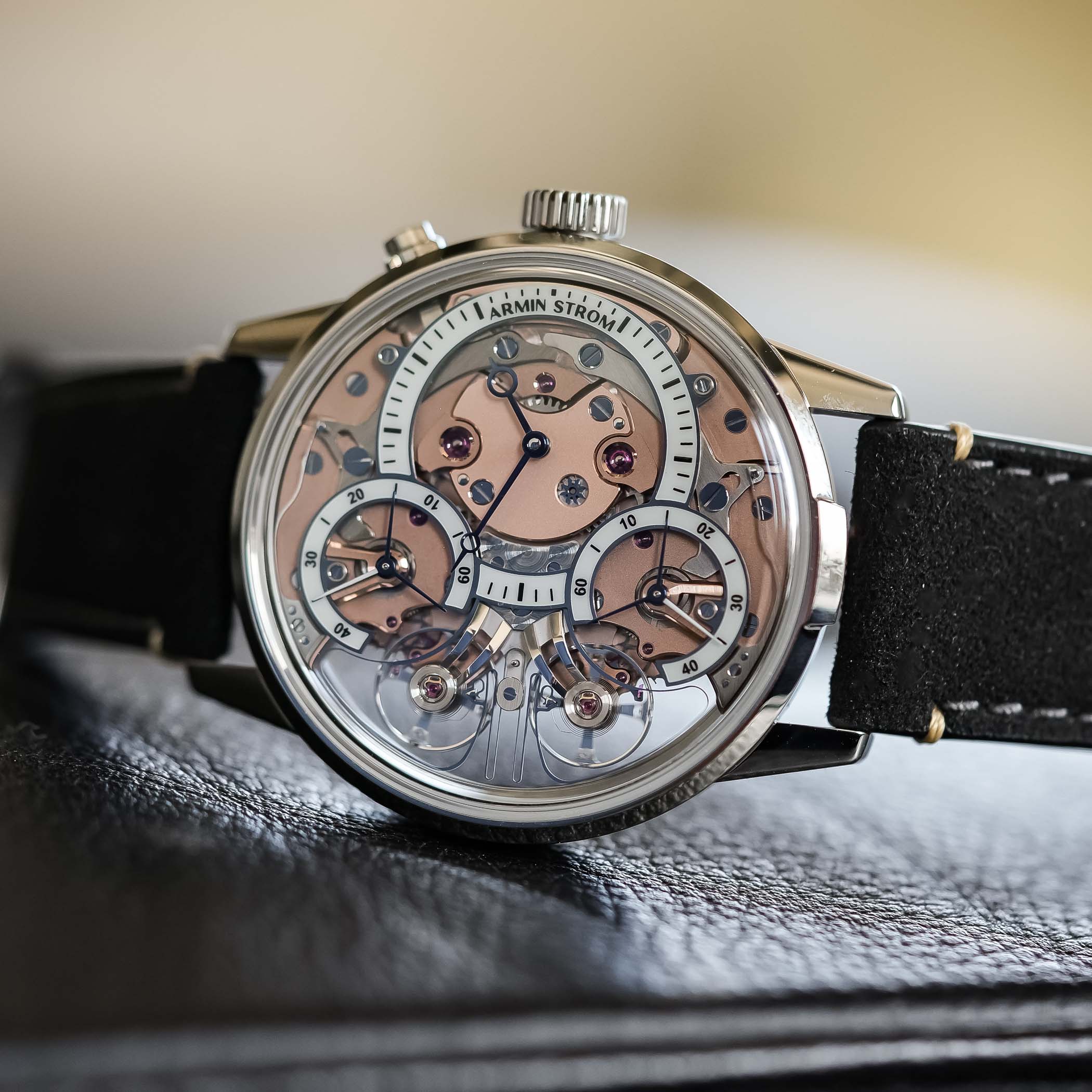Irish pop-rock icons U2 once sang Two Hearts Beating As One, a phenomenon that’s no stranger to any of us, but in watchmaking, we call this: Resonance! And resonance is mastered by only a handful of watchmakers, one of whom is Armin Strom! The concept of Resonance is far from new, as it’s a discovery made by Dutch mathematician, astronomer and engineer Christiaan Huygens. However, it has taken us centuries to fully understand the concept and harness it in a wristwatch, though, and this is where Armin Strom comes in. Launching its brilliant Mirrored Force Resonance in 2016, Armin Strom now imagines what such a watch would look like back when Huygens made his discovery, leading to this captivating Zeitgeist 1665 edition!
Running the risk of repeating ourselves on what Resonance actually is, it was Christiaan Huygens who discovered it in 1665. In his atelier, two of his pendulum clocks suspended on a wooden beam started synchronising their beat rate. He learned that by placing two oscillating objects in close proximity, the two would mirror their frequencies and slowly start sharing their “modes of motion”, as physicists describe it. But how to capture it in a clock, let alone a wristwatch?
As mentioned, only very few watchmakers have been brave enough to attempt to crack the codes of Resonance in clock- and watchmaking. Among historic names, Abraham-Louis Bregeut and Antide Janvier come up, and in modern times, François-Paul Journe was the first to work on this concept again. However, the solution for stable and resilient Resonance remained elusive until 2016, when Armin Strom’s Claude Greisler introduced his first Mirrored Force Resonance. Inspired by the suspension system in Antide Janvier’s Resonance Clock, the “MFR” came with a very special clutch spring!
The coupling clutch used to enhanced the resonance effect
Zeitgeist 1665
The whole idea of this latest, and perhaps greatest edition of the Mirrored Force Resonance yet, was to travel back to when Huygens first made his breakthrough discovery. Claude Greisler wondered what a portable resonance watch might have looked like had such a thing been conceived centuries ago, with the watchmaking design codes of that time. This new Zeitgeist 1665 is the result of that exercise in imagination. It’s a retro-futuristic design that brings together past, present and perhaps future, in a timepiece that can best be viewed through the stylistic lens of the 17th and 18th centuries.
It comes in a stainless steel case of 43mm in width, 11.5mm in height and a lug-to-lug of just under 50mm. So not the smallest watch, but still very wearable. Key elements such as the sharply angled and faceted lugs, the bezel lip at 6’and the pusher alongside the crown are all there. But it’s when you look deeper into the details on the dial and movement side that things start to shift in a different direction.
The Zeitgeist 1665, much like other Mirrored Force Resonance editions before it, does not rely on a classical dial. Instead, it has an offset dial for the hours and minutes, with twin running seconds indications on the left. For the Zeitgeist 1665, the hour and minute dial is opened up almost entirely, revealing even more of the movement underneath. The 18k white gold tracks, for lack of a better word, are finished with a creamy white polished varnished lacquer. The hands, all done by Armin Strom in-house, are heat-blued over a flame, and the three-spoke running seconds hand have a single lacquered spoke, to tie in with the tracks it runs along.
Bridging centuries
The unique display is made possible thanks to the in-house calibre AFR21_ZG that powers the Zeitgeist. Armin Strom’s solution to harness the properties of Resonance is suspended in full view on the left side of the manually wound movement. The two independent regulating systems, each with its own geartrain and barrel, are only connected by a special clutch spring. The balance wheels oscillate in opposite directions, with the spring ironing out irregularities between the two, allowing them to sync their rhythm progressively.
The two balance wheels are mounted on individual bridges, with the clutch spring swinging back and forth constantly. When the two run out of sync, it will show in the running seconds subdials. But a simple push of the button at 2′ will reset the two running seconds hands again. The movement itself runs at a rate of 25,200vph, which equates to 3.5Hz. Thanks to the two-barrel system, it delivers a power reserve of up to 80 hours. And, as we’ve come to expect from Armin Strom, everything is beautifully finished.
All of the 260 parts in the movement, so even those you can’t see get the same care and attention. The mainplate and bridges are finished with a finely grained matte rose gold PVD. Then there are plenty of hand-bevelled edges, black polished screws, and various types of brushing to be admired. The barrels are skeletonised, the unique click spring can be seen in full, and you get an unimpeded view of that mesmerising clutch spring from both sides. Each movement is hand-engraved with the fact that it is a Zeitgeist model, and is one in a very limited series.
Price & Availability
The Armin Strom Mirrored Force Resonance Zeitgeist 1665 comes on a grey Alcantara strap with matching stitching, quick-release pushpins and a steel pin buckle. It is limited to just 25 pieces and comes at a price of CHF 82,000 before taxes. Certainly a lot of money, but acceptable considering the technical prowess, how unique a timepiece it is, and the high levels of finishing on display.
Admiring this up close is once again a testament to the brand’s capabilities, both technically and aesthetically. It’s a beautiful ode to independent watchmaking and the achievements in science and timekeeping of Christiaan Huygens. His discovery, captured in a hypnotic three-bodied Waltz of two oscillators and that remarkable clutch spring, makes it feel like a true watchmaking lesson on the wrist.
For more information, please visit ArminStrom.com.
https://monochrome-watches.com/armin-strom-mirrored-force-resonance-zeitgeist-1665-price-video-review/

